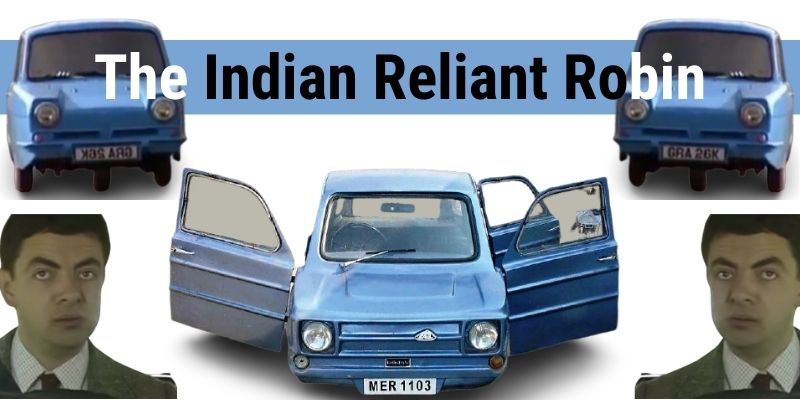For those who are thinking, why Mr Bean is in the picture, go see Mr Bean first. But wait, read this small article before, I am sure you won’t be disappointed learning about a piece of Indian automotive history. Reliant Robin is famous because of the Mr Bean show. A car that never was able to get away from him and always used to tumble against Mr Bean’s Mini 1000 Mk IV. Rings a bell? Good. Now, here in India, there was a 3-wheeled, 3-door adaptation of this Robin very well known as Sipani Badal.
How did Sipani Badal come into existence?
Back in 1973, SAIL or Sunrise Automobile Industries was one of the few manufacturers to obtain a license for manufacturing cars. RK Sipani was the man behind SAIL, hence usually the cars have Sipani in their names. This company tied up with the British carmaker, Reliant. And, that is how Reliant Robin came to India in the form of Sipani Badal.
If you were in 1973, what would have the Badal offered?
Well, you will be greeted by a 3-door car. One door on the driver side and 2 on the passenger side. You will find that there is enough room to seat 3-4 people inside. You’ll find that Badal is powered by the Innocenti-sourced 198 2-stroke engine. The rear-mounted engine produced around 12hp. Ever heard of Innocenti? Well, that’s because it is the brand that introduced Lambretta to the world.
How would it feel like to drive the Sipani Badal {Reliant Robin}?
Here’s a clip for those who don’t know about the Reliant Robin in Mr Bean!
Well, one thing for sure, extra precautions at the corners. As we have already witnessed what used to happen to Robin in Mr Bean, Badal is no different. Extra Cautious! If you were to drive one.
Sipani Badal offered a steering wheel, door handles, some gauges behind the wheel, a parcel tray on the rear and storage space in the dashboard. It was not much, but it was honest work.
Sales Figure of the fibre car
It was never a rain of sales for this Badal! In 1977, 179 units were sold but increased to 331 the next year. A major dip in 1979 as the sales figure was a mere 104. By 1981, this was halved to 51 (I am not bad at math, it is 1 less than 52, the figure if you were to buy it, remember, I sent you back in time, this is the year, my article, my rules). In the year of Maruti’s entry, Sipani sold only 31 Badals. Maruti 800 is here! Do we need any other reason for the failure?
Well, there was one more. The Indian Government never allowed Sipani to sell cars in north India. It remained restricted to the south only. Thus, the market was small and it became really difficult for the company to operate in such a small audience.
And that is how the 3-wheeler fibre car got lost in the rubble. What do you think? Do let us know in the comments section below.
Another revisit: 5 Lesser-Know Indian Cars From The Past | Ever Heard Of The 5th One?
Image Source(s): {1}
